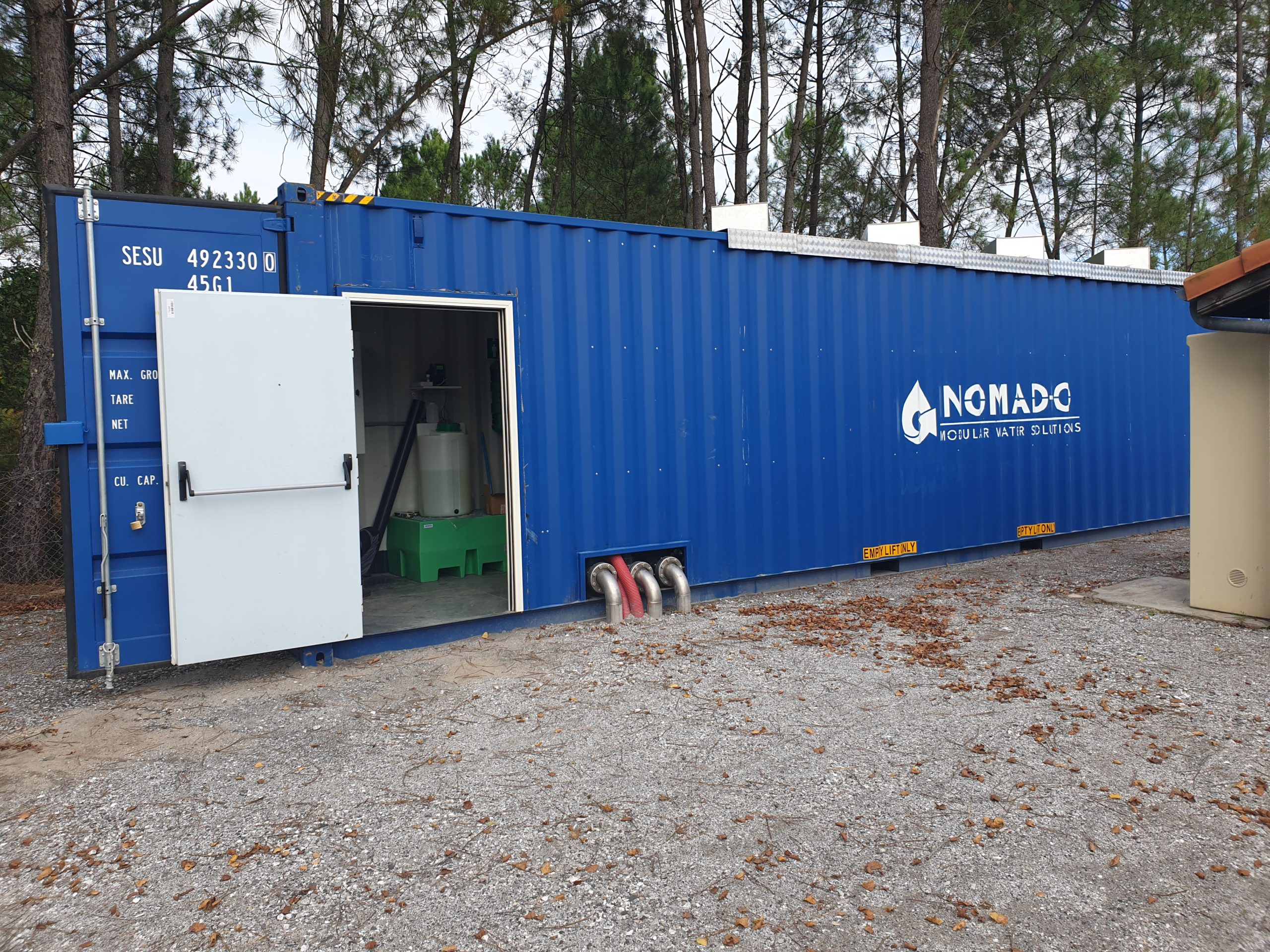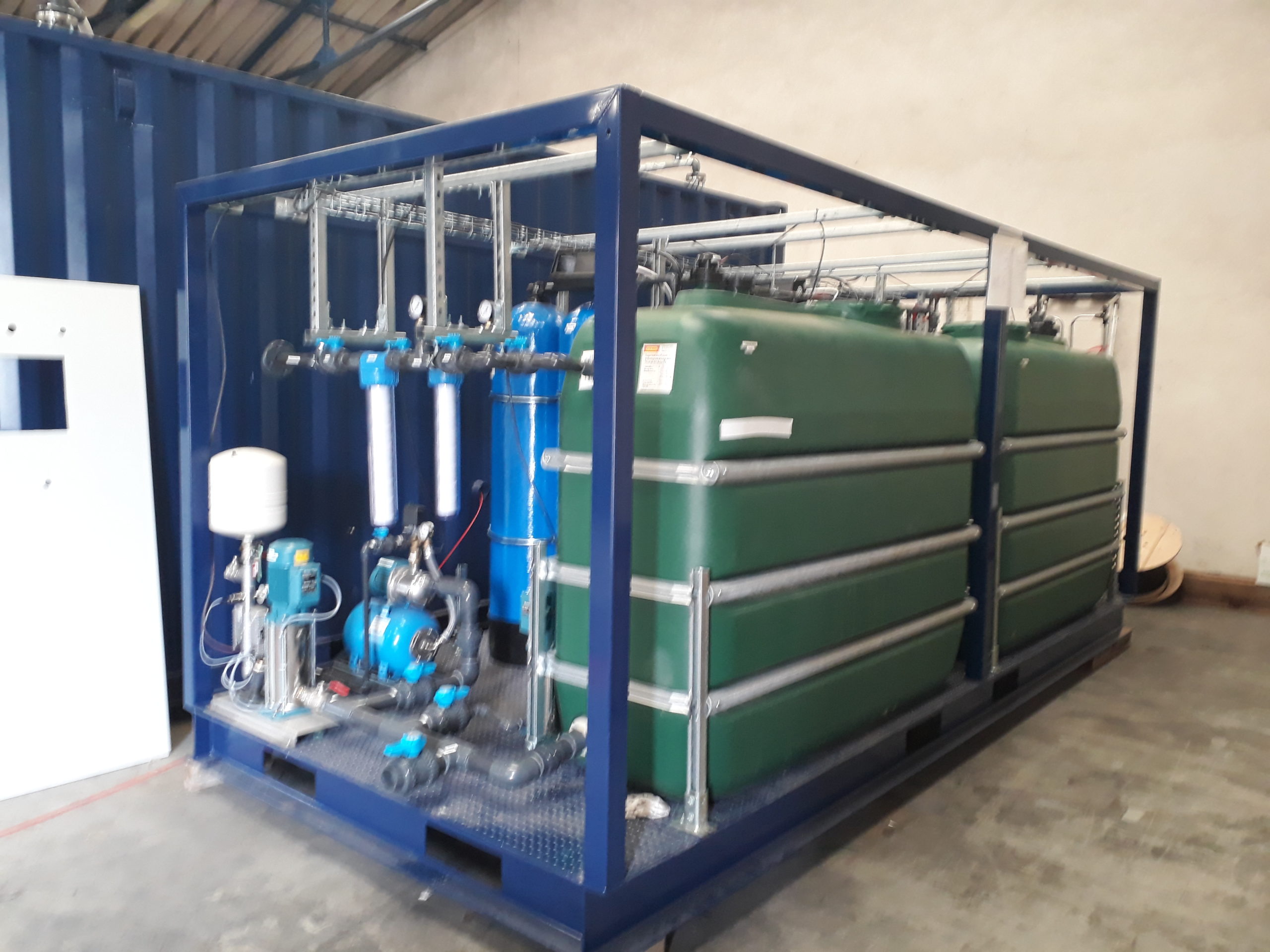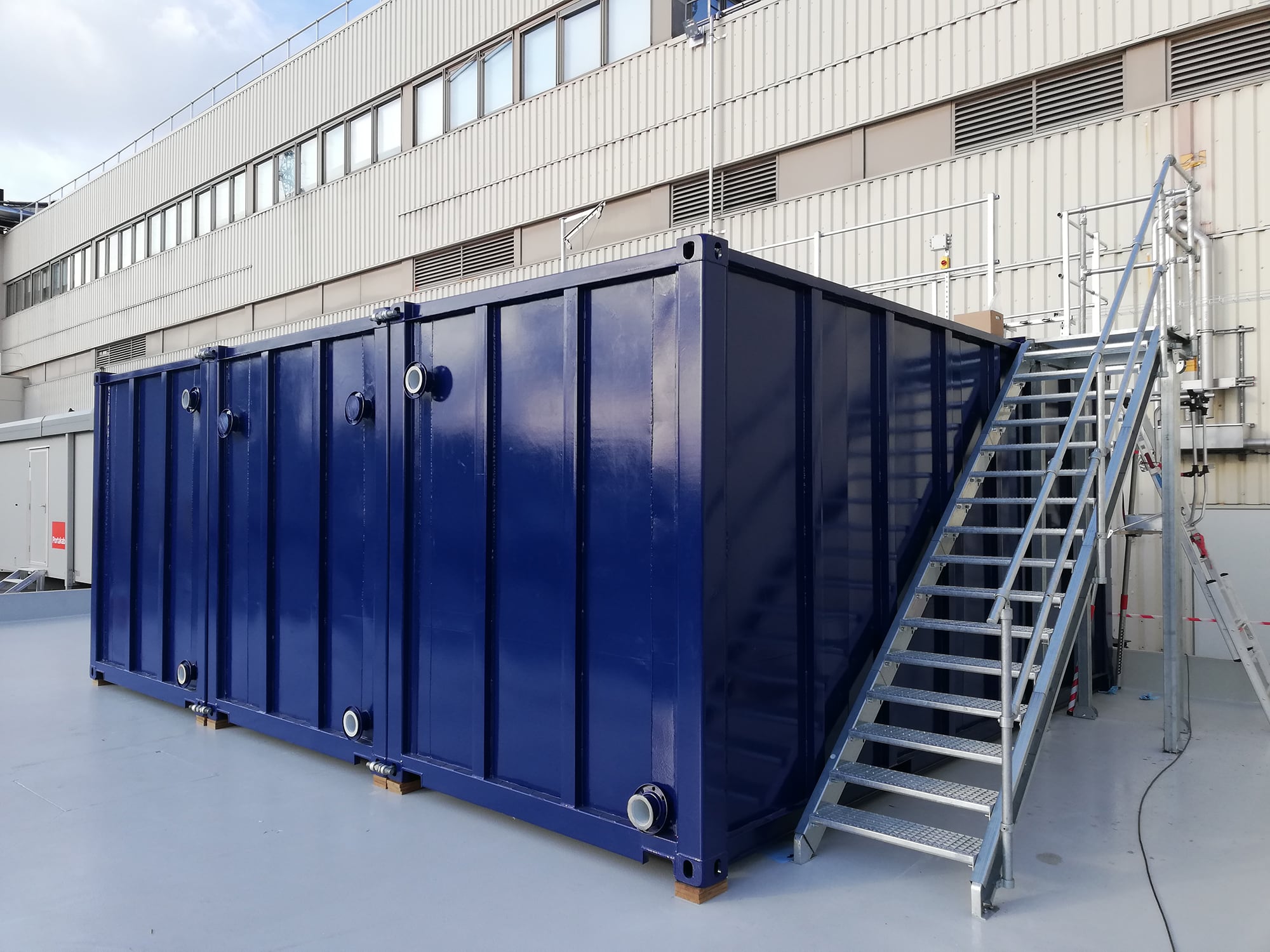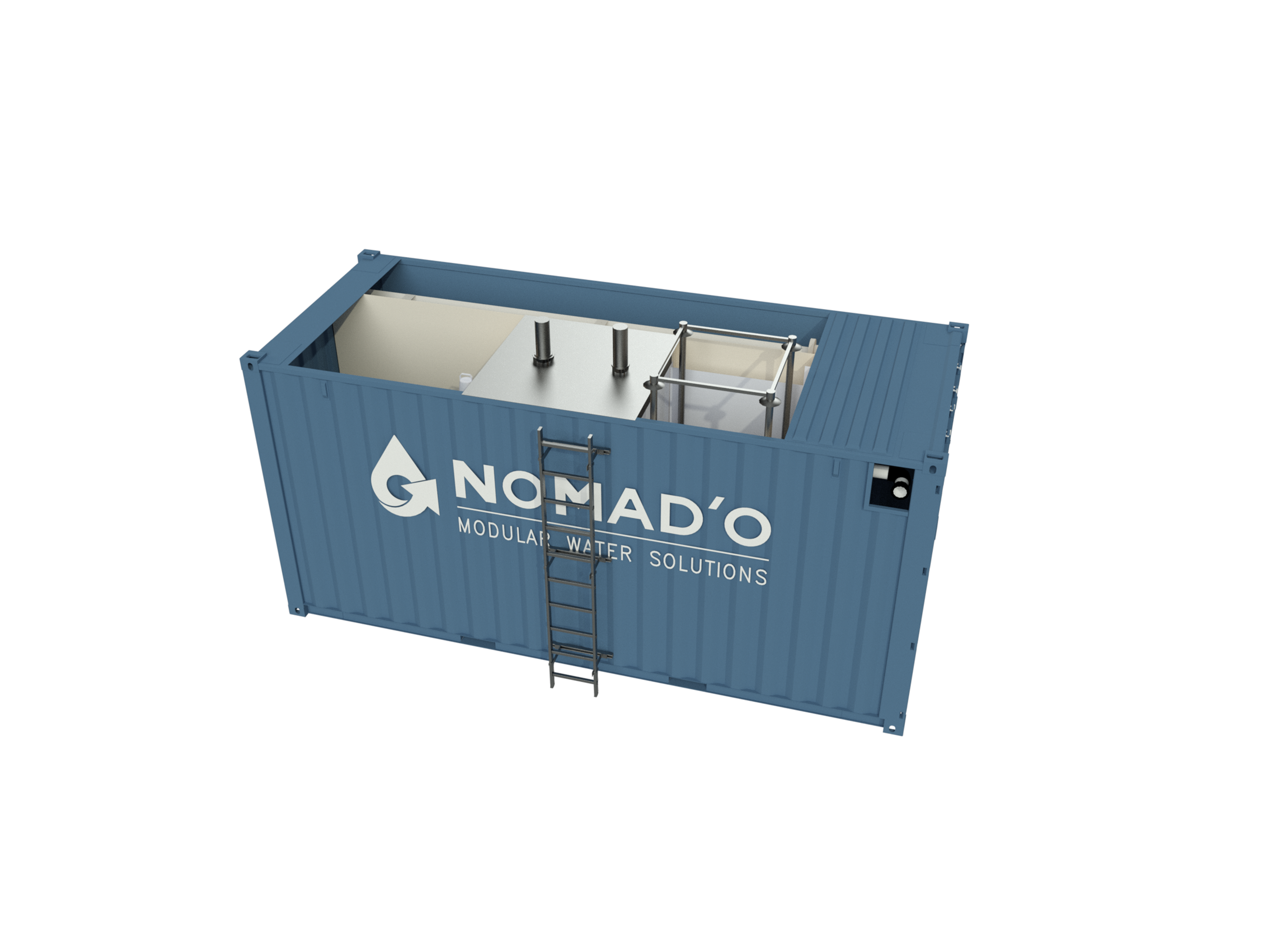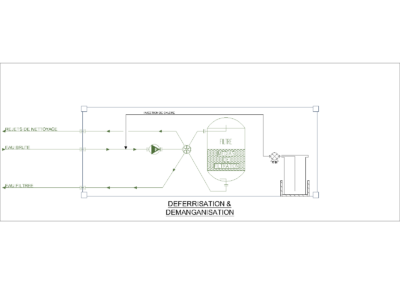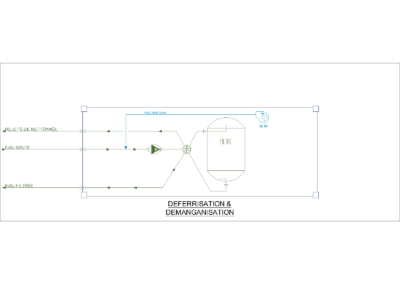Our plug & play offer
Commissioning made easy and maintenance taken into account from the design phase.
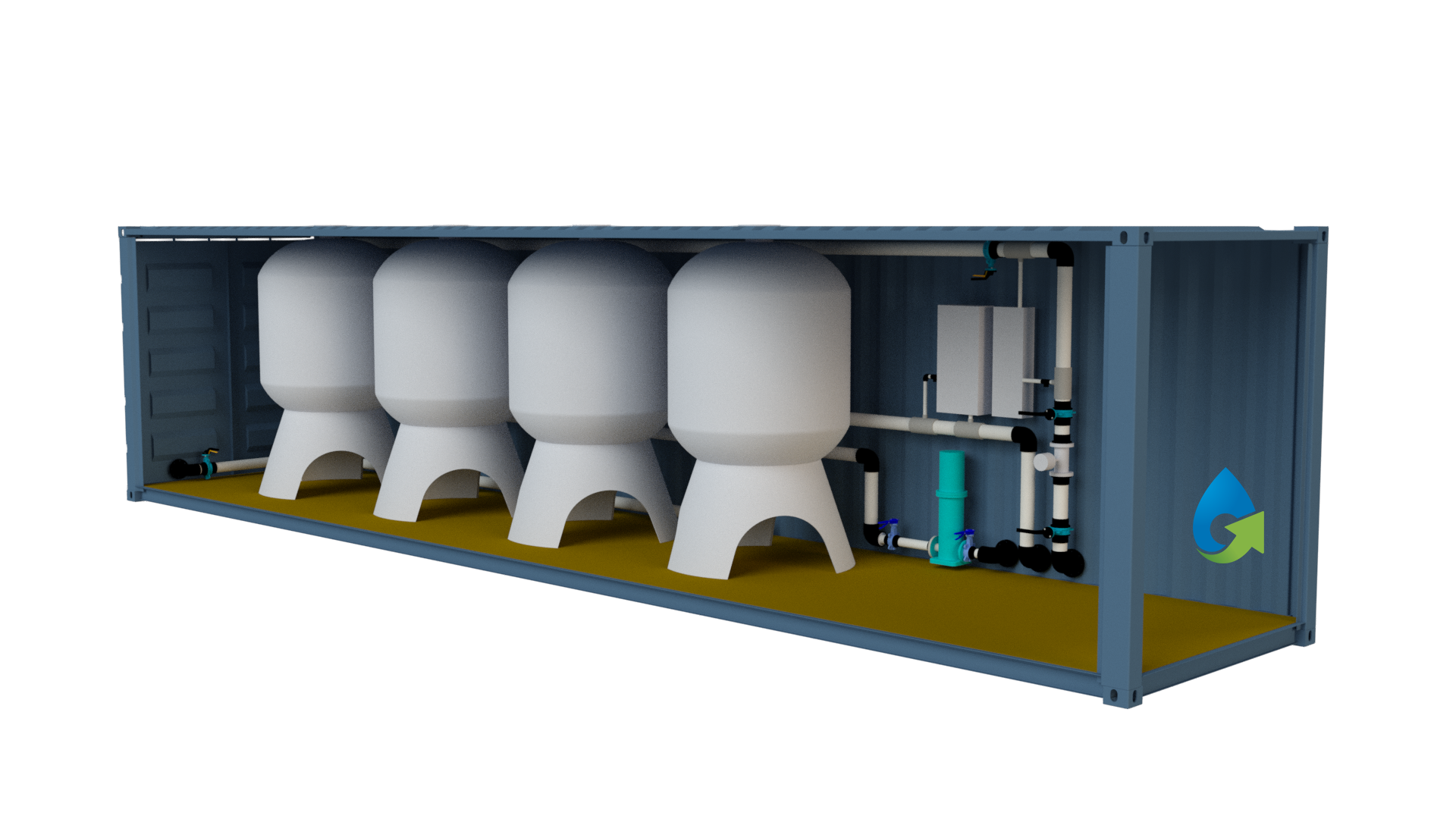
Containerized solutions
Suitable for the most extreme conditions, this is a first-class solution for a robust, lasting and economical unit.
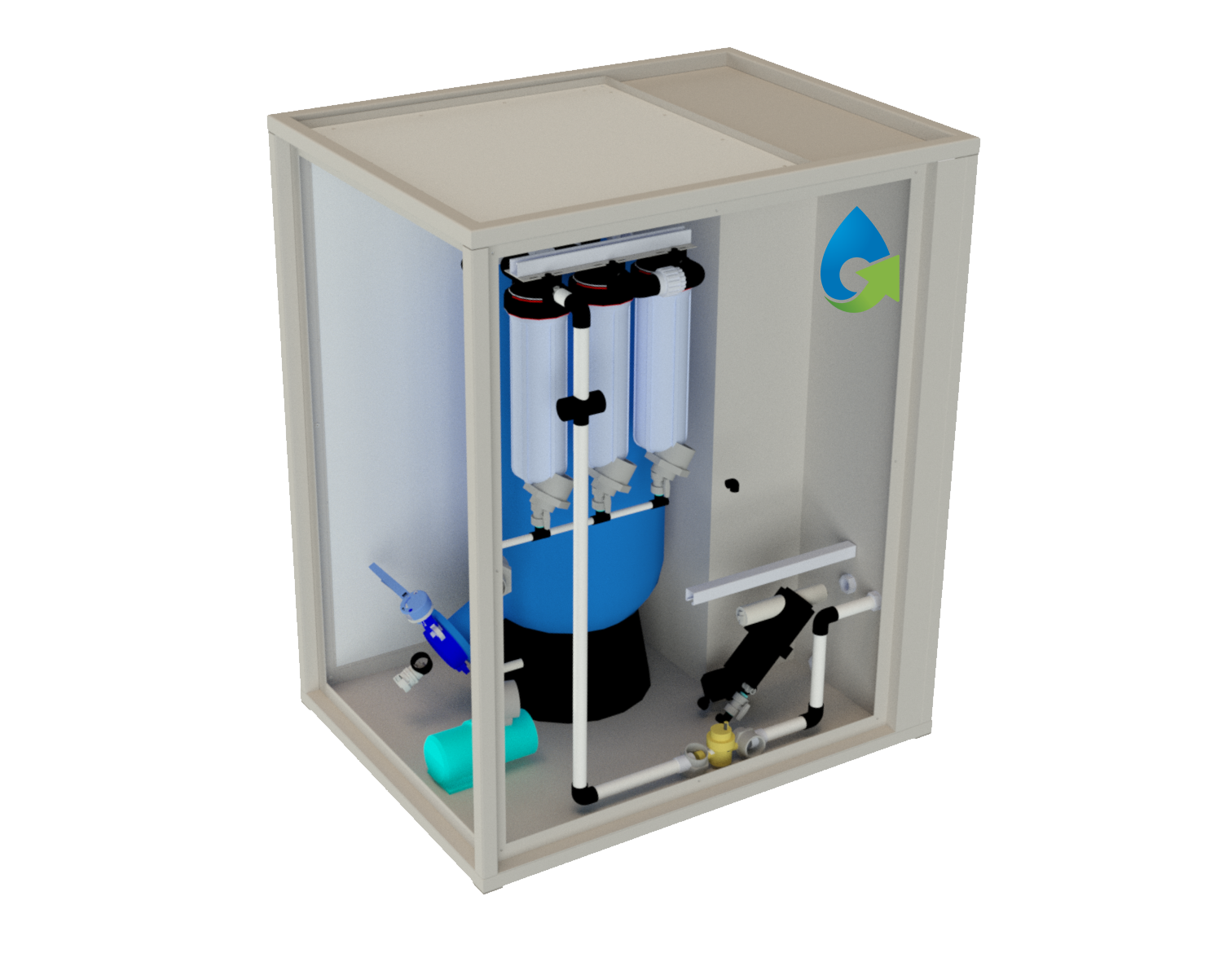
SKID solutions
Compact, easily transportable and self-sufficient unit, the Skid is compatible with all drinking water production technologies.
Read more
The solutions that we offer adjust extremely well to variations in the quality of the water to be treated and the quantity of the load that it contains. Our treatment units are integrated into sea containers or mounted on SKIDs thereby reducing production times, installation times on site and civil engineering costs.
Sheet metal work and welding of the hydraulic structures are performed directly inside the container. Waterproofing is ensured by a seal made of special coatings that constitutes a perfectly monolithic block. It prevents water from coming into contact with the structures. The Coatings’ properties are always chosen in accordance with the project’s specifics (Health compliance certificate, WRAS, aggressiveness of reagents or water, etc.).
Sheet metal work and welding of the hydraulic structures are performed directly inside the container. Waterproofing is ensured by a seal made of special coatings that constitutes a perfectly monolithic block. It prevents water from coming into contact with the structures. The Coatings’ properties are always chosen in accordance with the project’s specifics (Health compliance certificate, WRAS, aggressiveness of reagents or water, etc.).
Applications
Whether in France or internationally, our water treatment experts are available to help you define the treatment unit that will best suits your needs.
Construction of an iron removal unit
Drinking water
Pressure boosting and water treatment unit
Process water – Agri-food industry
Treating pharmaceutical effluent using reverse osmosis
Industrial effluent
Treating concrete laitance at a major international worksite
Worksite effluent
The advantages of Nomado’s solutions

Cost benefits
- Cost-effective alternative to civil engineering infrastructures and buried facilities
- Systems that can be reused and relocated
(worksite bungalows, industrial reorganisation, end of concession) - Portable investment
- Possibility to rent, buy back or lease with option to purchase
- In-situ production or treatment

Operational and environmental benefits
- Multimodal transportation (rail, road, sea, air…)
- Simple, fast installation and commissioning
- Maintenance by our technicians possible
- Easy, rapid dismantling upon project completion
- Reduction in carbon footprint
- Worksite hazards reduced

Quality and HSE
- Treatment process adaptable to discharge standards
- Design in accordance with country standards and regulations
- Pre-built and factory tested
- Anticipation of the possibility of deteriorated operating conditions (scenario analysis)
- Targeted oversizing of critical equipment (pumps, motors, etc.)
- Specific job site conditions taken into account (heat, sand, sea, etc.)

Versatile and adaptable
- “Plug & play” design
- Possibility of adding a unit in the event of a variation in load or flow rate
- Can be integrated into an existing facility
Understanding how iron and manganese removal works


Treatment
To remove excess iron and/or manganese contained in water, we most often use oxidation followed by catalysis and filter retention. Biological iron or manganese removal may also be implemented when dealing with permanent facilities where effluent characteristics vary little.
Read more
Oxidation may be carried out in two different manners :
- Using chlorine or potassium permanganate
- Using air
We mainly perform chlorine oxidation because it is easy to adjust to the variations in iron and manganese concentration levels and the reagent is readily available throughout the world.
However, we may opt for oxidation with air if reagents are difficult to source (i.e. remote job sites supplied by air or other reagents such as potassium permanganate, if the project requires.
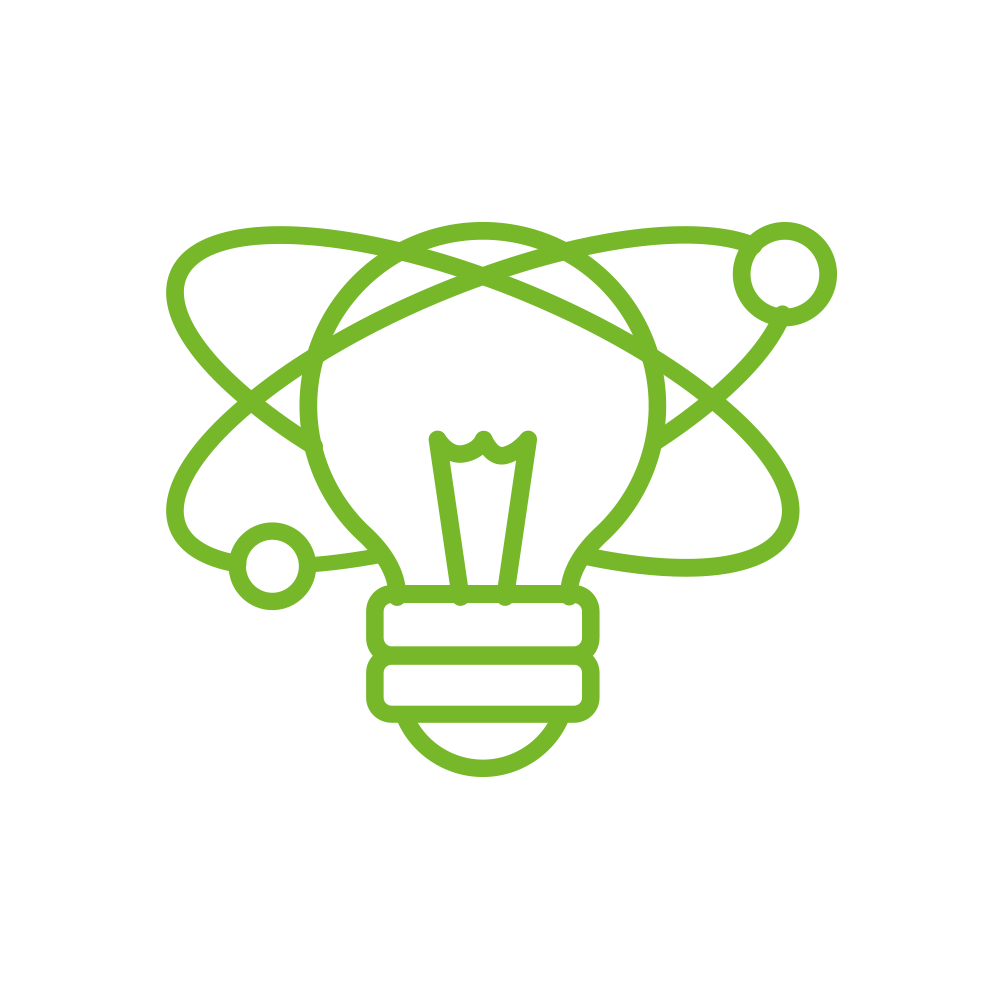
Process
Iron and manganese oxidation is boosted by using a filtering media that catalyzes the reaction. This media can be blended with the sand inside the filter. This catalytic process is based on the absorption then oxidation of the manganese or iron followed by precipitation on the surface of the filtering media. The media thereby plays the role of an ion exchanger and absorbent. Generally, it is a manganese oxide.
Tell us about your project

Nomado is specialized in the design and construction of compact water treatment units. Our solutions are integrated into sea containers, skid-mounted or mounted in portable cases.
CONTACT US
NOMADO
21, Boulevard du Capitaine Gèze
13014 MARSEILLE – FRANCE
+33 (0)4 84 89 52 42
© NOMADO SAS | ALL RIGHTS RESERVED

